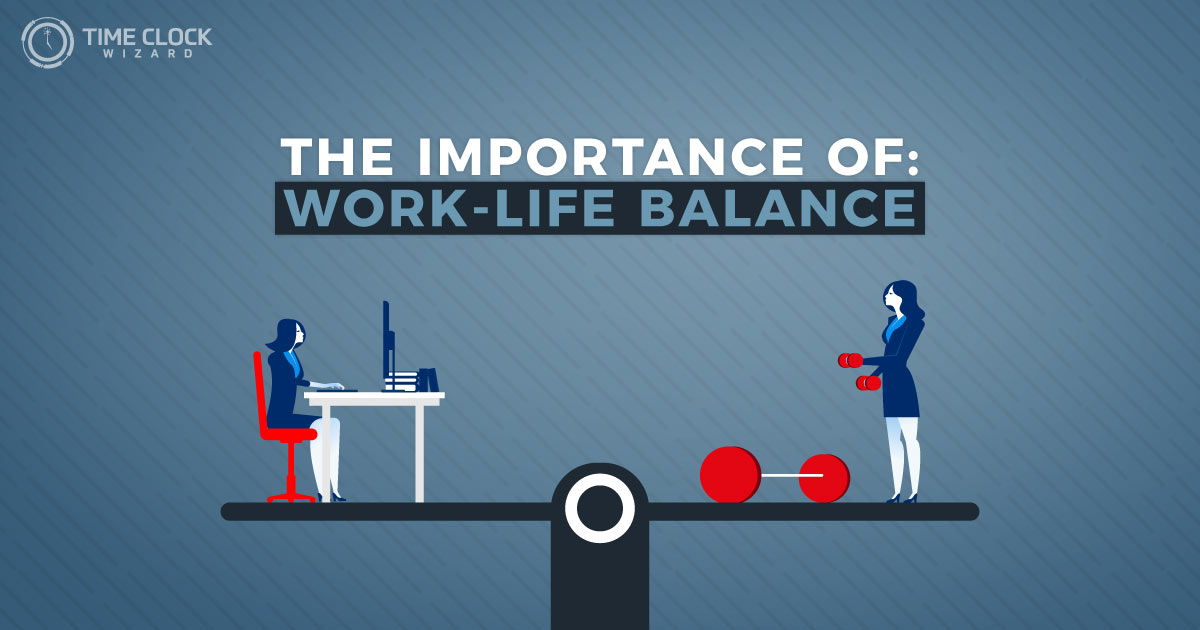
“Work is life” is a generational idea that is retiring with the baby boomers. The “live to work” generation is aging out of the workforce, and being taken over by gen X and millennials. This has created a paradigm shift in the way people think about their work life. The baby boomers created a competitive culture of workaholics. This forced businesses to find new ways to achieve job satisfaction in the modern workforce. Businesses striving for quality employees are adopting the idea of work-life balance in order to achieve ongoing success.
Work to Live, Not Live to Work: The Importance of Work-Life Balance
Research suggests that 95% of the workforce rate their personal lives as equally or more important than their work lives. “Work to Live, not live to work” is a concept that is sweeping the globe. As a result, achieving work-life balance has become a primary objective of and job-seekers in the workforce today. The days of grinding out days, nights and weekends in the workplace are coming to an end. The same holds true for the constant interruptions of business calls and emails. And now, employers and employees are both reaping the benefits of this new way of life.
Benefits of the Work-Life Balancing Act
Employees are not the only ones recognizing the importance of work-life balance. Employers embracing the idea are gaining the rewards of employees who are more loyal, attentive, and committed. Corporate Executive Board boasts “Employees who believe that they have a good work-life balance work 21% harder than those who don’t.” Similarly, Fortune’s “100 Best Companies to Work For” is full of businesses who emphasize work-life balance. These companies also consistently outperform their competitors in profits and growth. Read more about how you can engage the team and the five communication errors you can avoid.
Productivity
Medical and psychological studies conclude that “burnt out” employees suffer from physiological changes in brain chemistry resulting in cognitive impairments. Employees who are over-stressed and overwhelmed in the workplace are less effective and less productive as a result of processing errors and reactive control. Happier employees with the ability to disengage their minds from work will reduce burn-out increasing productivity, accuracy and overall quality of work.
Absenteeism
Most unscheduled absences from work are not a result of a sick employee. In fact, only about 34% of absences account for employee illness. A job that allows schedule flexibility allows employees to work around personal obligations like taking the kids to the dentist or making that loan appointment at the bank. Work from home availability allows a parent with munchkin home sick from school to continue to work on their phone or laptop from home instead of missing an entire day of work.
Attract Top Quality Professionals
With benefits promoting work-life balance being the second highest valued benefit after Health insurance by the Harvard Business Review, offering job flexibility could be the deciding factor for a highly skilled and qualified employee to accept an offer or move on to the next.
Reduce Turn-over Rates
Turn-over rates are an average of 10-15% lower than their industry competitors at companies adopting work-life balancing cultures. Lower turnover rates drastically decrease the financial burden of recruiting and training new employees, along with increased morale and camaraderie in the workplace.
Improve Branding
Without a doubt product quality and customer service create the majority of brand perception, however, we are seeing more and more branding through employee satisfaction. Consumers favorably perceive companies that treat their employees as valuable assets and that positive brand perception gives an edge over the competition.
Happier and Healthier Employees
Did you know that healthcare expenses have been found to be nearly 50% higher for workers with high-stress levels? Or that insurance claims for stress-related, workplace accidents cost almost twice as much as non-stress related ones? One-third of employees report they experience high levels of on the job stress, a situation that can be financially devastating to business. Reports have shown that stressful job environments tend to report more absenteeism than less stressful environments.
According to an article released by Forbes, this can translate to roughly $3,600 per year for an hourly worker and $2,650 per year for a salary worker in costs to employers. Companies promoting work-life balance are reporting lower costs in these areas as a result of less stress in the workplace. In fact, they are seeing profits where their competitors are seeing expenses, as happier and healthier employees are more engaged, more productive and more likely to promote their companies services.
Fostering the Culture: How To Help Your Employees
-
Ask Employees What They Need
Employees are as individual and diverse as they are in lifestyle, so a one size fits all solution may not be appropriate. Find out what employees feel will be beneficial and initiate action where possible.
-
Offer a Flexible Work Schedule
Flexible schedules are the cornerstone of work-life balance. Some industries are able to initiate shift work, or extended 4 day work weeks. In the world we live in today, the ability to telecommute exists like it never has before. Some companies have employees telecommute one day a week, and some have made it a more frequent practice. Either way, it allows the time for employees to attend to personal obligations and fulfill their work duties around their schedule. Telecommuting also saves the employee in travel time and expenses of the daily drive to the office.
-
Allow Some Personal Life at Work
Businesses have been finding creative ways to help employees achieve work-life balance by bringing home to work. Some businesses have made gyms available for use at the office. This saves the employee the cost of a gym membership and decreases commuter time. It also helps keep your employees healthy, gives them a positive outlet for stress and promotes a healthy lifestyle. Some businesses offer childcare for employee’s young children, a major bonus for any parent of young children in the workforce.
Businesses such as Google allow employees time in their workday to work on their own creative ideas. Allowing employee’s time to brainstorm their own creativity encourages employees to be complex thinkers and use their imaginations while contributing new ideas for business growth. Encouraging creativity for business use is an awesome way to get employees excited about the work they do, giving them a sense of ownership and value in the company.
-
Paid Time Off
Give employee’s vacation time and urge them to use it. It may seem like an expense, but having rested employees will increase their overall productivity in the long run. Investing in an employee’s well-being and life outside of the workplace improves morale as employees will feel valued as individuals.
-
Sometimes Life Interferes With Work
Research shows that employees with job satisfaction are invested in their work, the well-being of the company and their management staff. They feel a sense of ownership and are passionate about meeting deadlines and customer satisfaction, so unexpected time away from work can come with a great deal of anxiety for workers. If a missed day of work can be avoided, it often would be. Management needs understanding in these situations, no matter what the situation is at the workplace.
Often, there are ways to work around the employee needs if coming into the office isn’t possible such as telecommuting a partial day or changing the schedule, but sometimes the employee just won’t be able to work. Trust your employees to make the responsible decision and offer support. If overuse is a problem, address it individually with problematic employees.
-
Respect Employees Personal Time
The same technological advances of today that allow so much more freedom in our work schedules can also be debilitating when it comes to maintaining work-life balance. We aren’t able to leave our work at the office anymore. This is because we have our office e-mails linked to our smartphones, laptops, and tablets. It’s easy for an employer to send emails without thinking about when an employee might receive them.
This might be a convenient way for employers to clear their inbox, but the opposite holds true for employees. They often feel obliged to re-engage with work when they receive messages from their employers instead of waiting until the next morning. Many employers now use dedicated apps to schedule delivery of employee e-mail. That way, they can continue to work at their convenience without infringing on their employees’ personal time.
Work-Life Balance Tips for Employees
-
Set Boundaries
Don’t make a habit of excusing yourself from family dinners to take calls from your superiors. Just because you can, doesn’t mean you should.
-
Plan Downtime
Schedule time for activities. Whether it’s going to the gym, reading a book or date nights, set aside the time in your schedule and make it a priority.
-
Schedule Chores
It’s too easy to let things go until they just can’t wait any longer, leaving you taking that priority date night to stay in and do laundry. Plan time for chores, and get them done.
-
Enjoy Weekends
Just because we can plug in our laptops to recharge while we keep working doesn’t mean we can do the same. When weekends and work-days all run together, it’s time to prioritize setting aside the time to recharge our batteries. It may not be possible to let all job-related tasks wait until Monday, but pack in some fun with friends and family and some relaxation time over weekends.
-
Take Your Vacations!
If your company offers you vacation time, use it! Unplug and unwind. This will benefit you mentally and physically, refreshing you to get back to work and continue being a valuable asset. Burnt out, overworked employees are a mental and financial drain on the workplace. Not taking that vacation isn’t doing anyone any favors!








